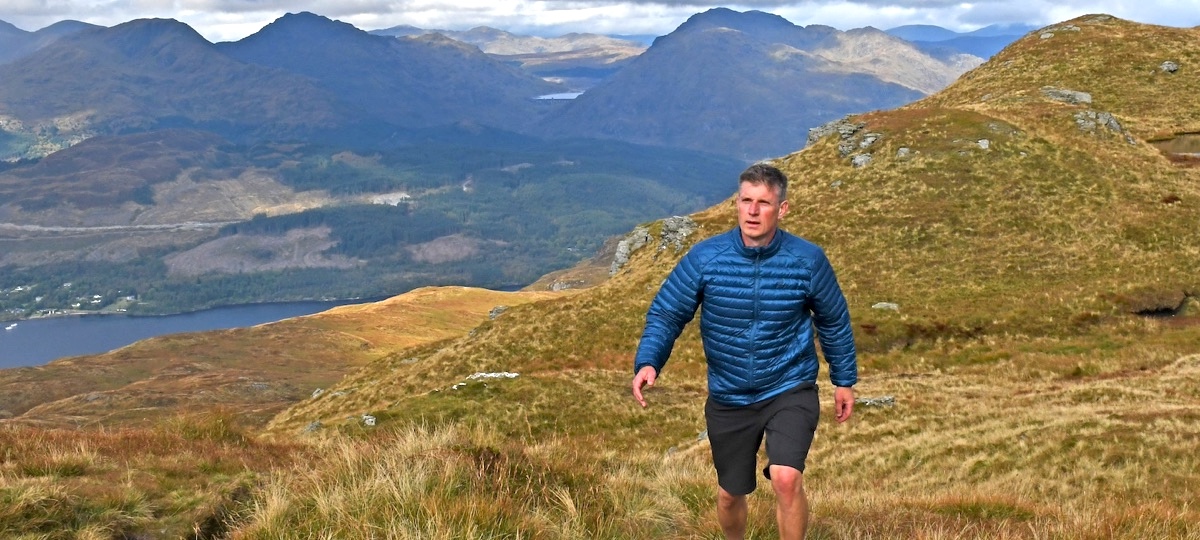Advnture Verdict
This responsibly made, reasonably priced duck-down jacket from Kiwi brand Kathmandu hits all the right notes: ideal as a non-bulky but toasty warm mid layer throughout the properly cold months, it also works very well as an outer layer during chilly, dry days in the shoulder seasons of fall and spring. Lightweight and compressible, it packs down nice and small and is easy to carry. Add some thumb hooks and it would be close to perfect.
Pros
- +
Warm without being too chunky
- +
Breathable
- +
Well made, with good baffling
- +
Decent eco creds with recycled content and certified down
- +
High front zip
- +
Water-repellent outer
- +
Highly packable (stuffs away into a pocket)
- +
Excellent interior pockets
- +
Sensibly priced
Cons
- -
No thumb hooks
- -
Not suitable for vegans
You can trust Advnture
Kathmandu Heli R Down Jacket: first impressions
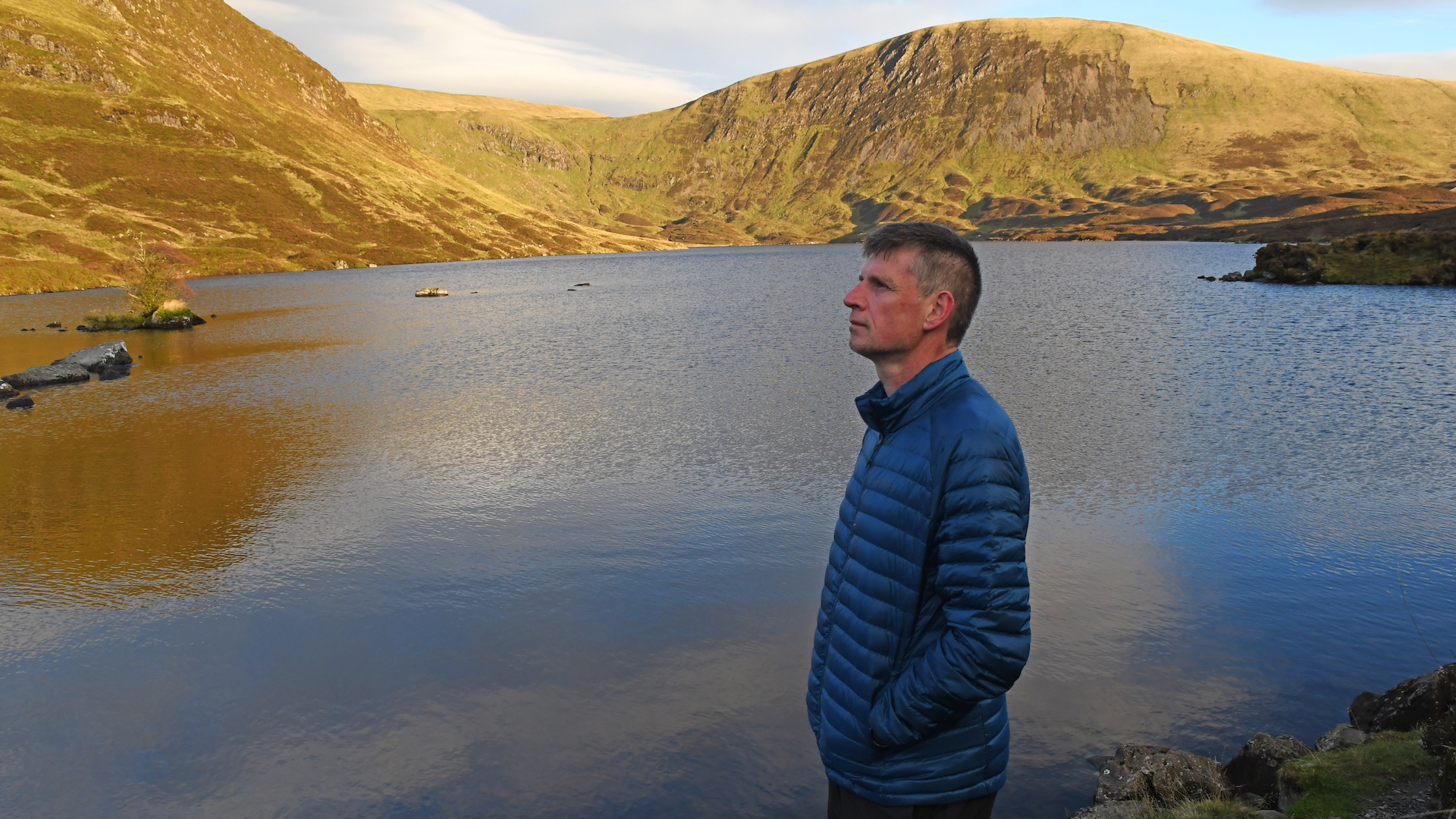
The Kathmandu Heli R Down Jacket come from a brand I know very well. In a previous existence I lived in Australia and spent lots of time in New Zealand, and in both countries Kathmandu kit (mostly apparel) was ubiquitous – worn by everyone from weekend warriors bushwalking and adventuring through the Southern Alps to outdoorsy parents waiting at the school gate.
• List price: $170 (US) / £140 (UK) / $220 (AU) / €160 (EU)
• Fill: Duck down (80%), duck feathers (20%)
• Shell: Recycled polyester (100%)
• Lining: Recycled Polyester (100%)
• Fill weight: 86.3g
• Fill Power: 600
• Sizes: XS-XXL
• Colors: Red Earth / Black Stingray / Beech & Dark Moss / Liqueur / Undertow (men's); At Twilight / Beech / Back Stingray / Light Quartz / Deep Lagoon, Jam & Light Quartz / Mustard Yellow (women's)
The Kiwi brand had its own shops on every Antipodean high street and, while it wasn’t considered the trendiest or most high-end logo to be seen in, the apparel was always far more accessible than ultra expensive labels like Arc’teryx. In my experience it was well-designed, decent-looking gear, which performed perfectly well in the outdoor settings it was designed for (I’ve still got a Kathmandu top from those days that’s pushing 25 years old – it’s the best fleece jacket I’ve ever owned and remains my go-to dirt-bag camping top). When they were little possums, my kids were kitted out in Kathmandu clobber most days too, so the logo gives me warm, fuzzy memories.
Suffice to say, when the brand relatively recently started selling kit up here in the northern hemisphere, instead of just down under, I was excited to rekindle my relationship with Kathmandu, to see what direction the gear has gone in.
On paper, the Heli R Down jacket looked good – the perfect outer layer for shoulder season shenanigans and mid layer for more wintery adventures – made with recycled materials and ethically sourced down. But how would it compare to the best down jackets on the market when used out on the trails and hills? There was only one way to find out.
Kathmandu Heli R Down Jacket: design and materials
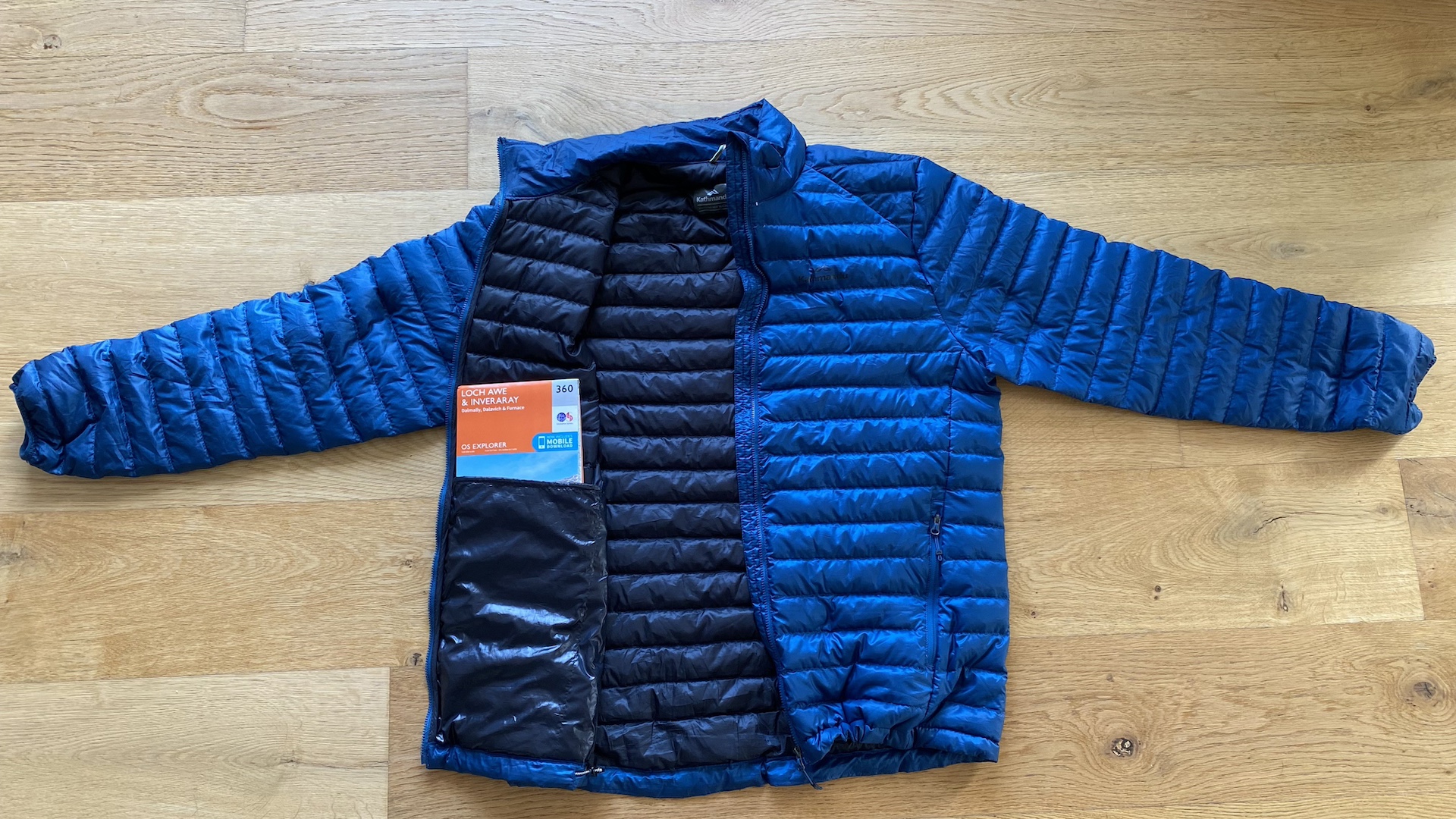
Aotearoa (phonetically Ah-Oh Teh-Ah Roe-Ah) is the Māori-language name for New Zealand.
Although the brand celebrate their Aotearoa roots loud and proud, most Kathmandu gear is made in Indonesia these days, but even the fanciest outdoor brands offshore their production and it was good to see that – fill aside – this jacket has primarily been constructed from recycled materials.
The lining and shell are made with 100% recycled polyester, a bluesign-certified ripstop fabric, while the puff is provided by RDS-certified down, meaning it comes from ethically compliant sources. The little components (zip lining, label, etc) are also made from repurposed materials, and you can use a TrackMyDown QR-code to see how all the various parts (including the down) have been sourced.
The shell has been treated with a Durable Water Repellent (DWR) finish, so moisture beads up and runs off, and the jacket can resist light showers and mist without getting soaked through. There is also a storm flap to cover the excellent YKK main zip.
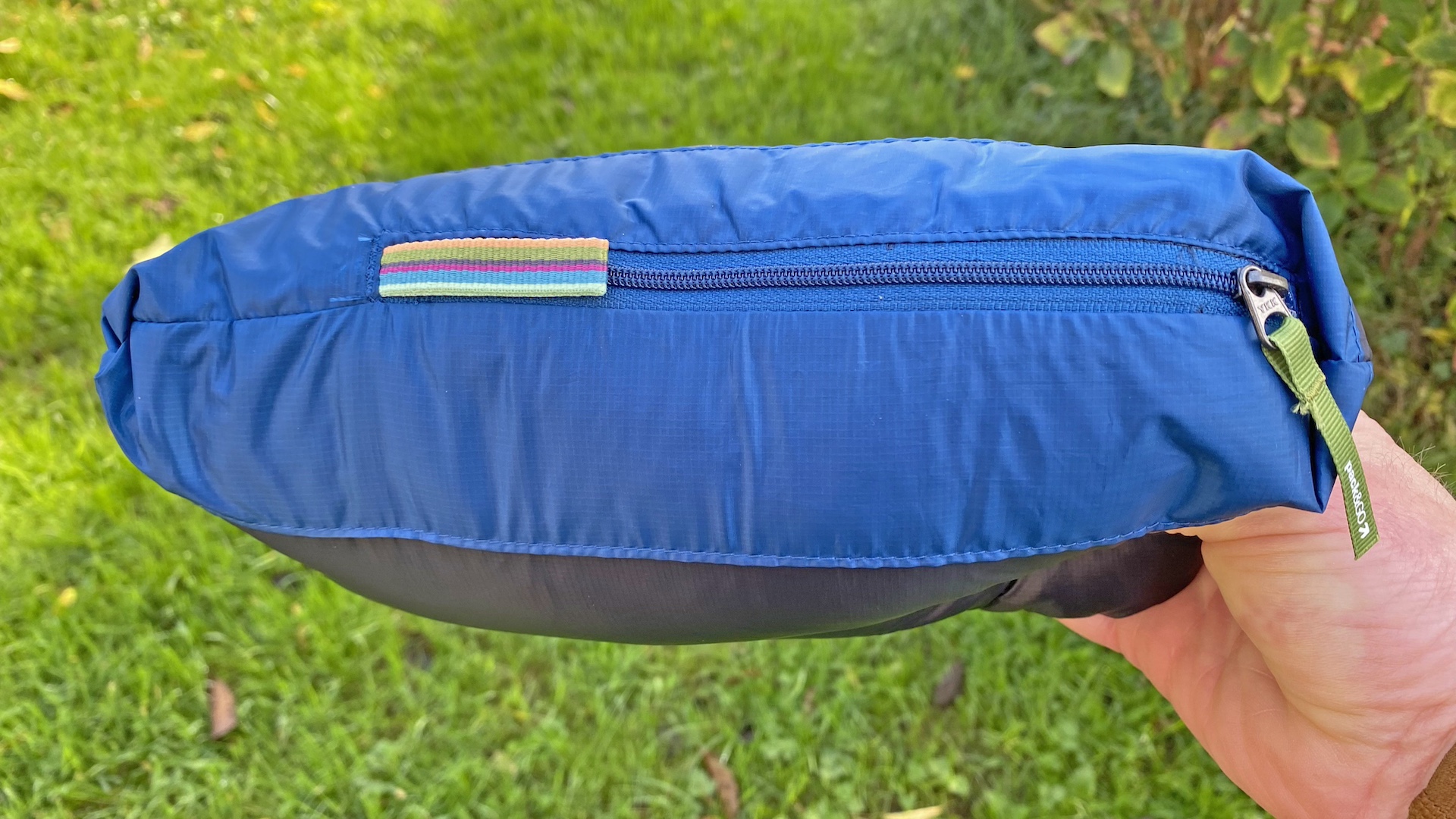
A 600 fill-power puffer jacket, it’s highly compressible, and packs away into one of its own hand pockets for easy transportation (don’t store it stuffed away like this, though, as it will impact the down’s loft over time). The latest version of the Heli R is now available in new colors, and it’s 25% lighter than the older version.
A colleague has already tested an earlier and slightly different iteration of the Heli R jacket with a hood, but I hit the hills to test the new lidless version and see how it compares to other good down and puffer jackets.
Meet the reviewer
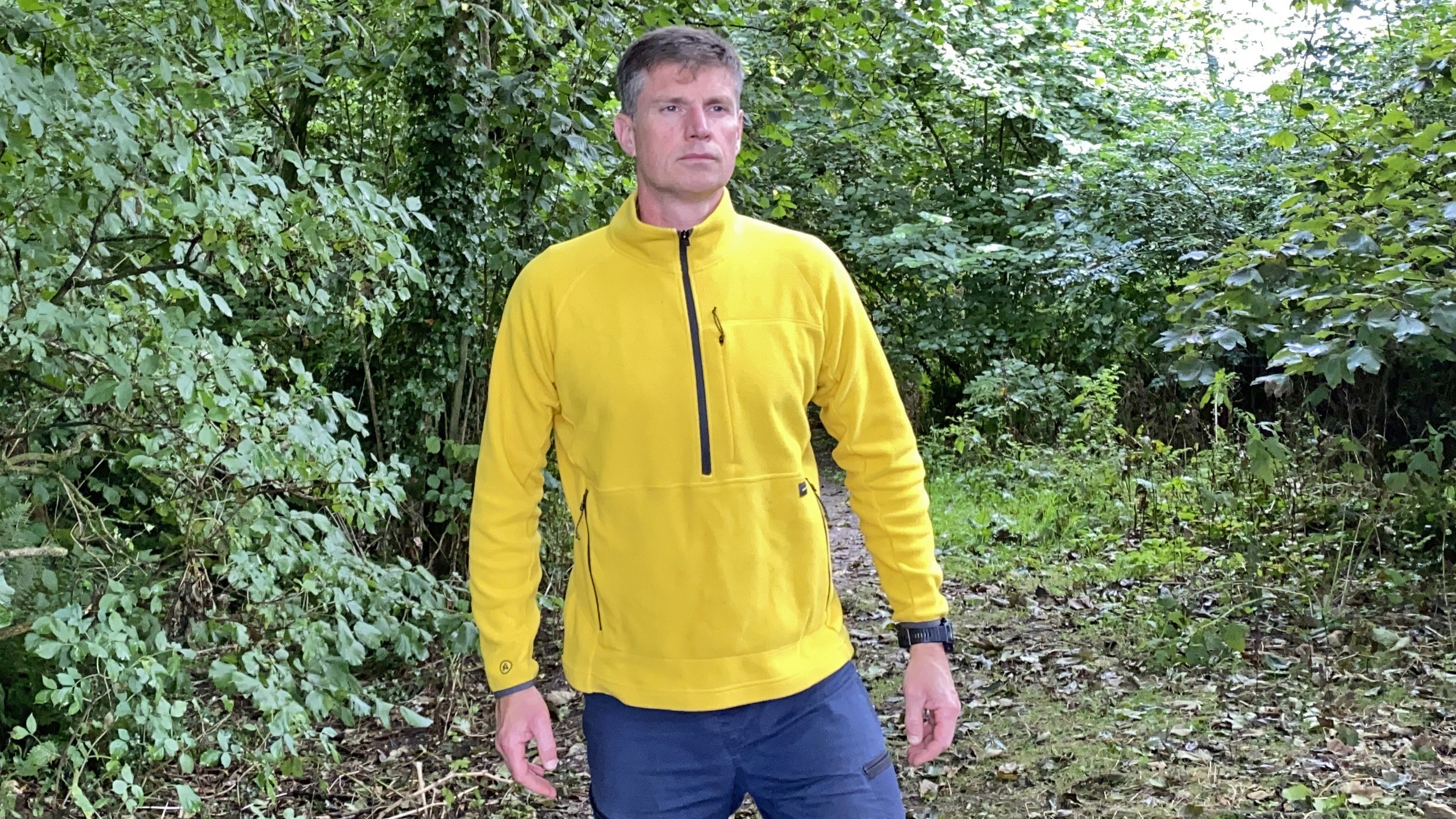
Pat has hiked all over the world, his adventures taking him to Mont Blanc, the roof of Western Europe; the Norwegian Alps; the highest peaks in Australia; and New Zealand’s Great Walks – among others. He’s an experienced tester of hiking gear and gives kit a thorough thrashing before reviewing.
Kathmandu Heli R Down Jacket: in the field
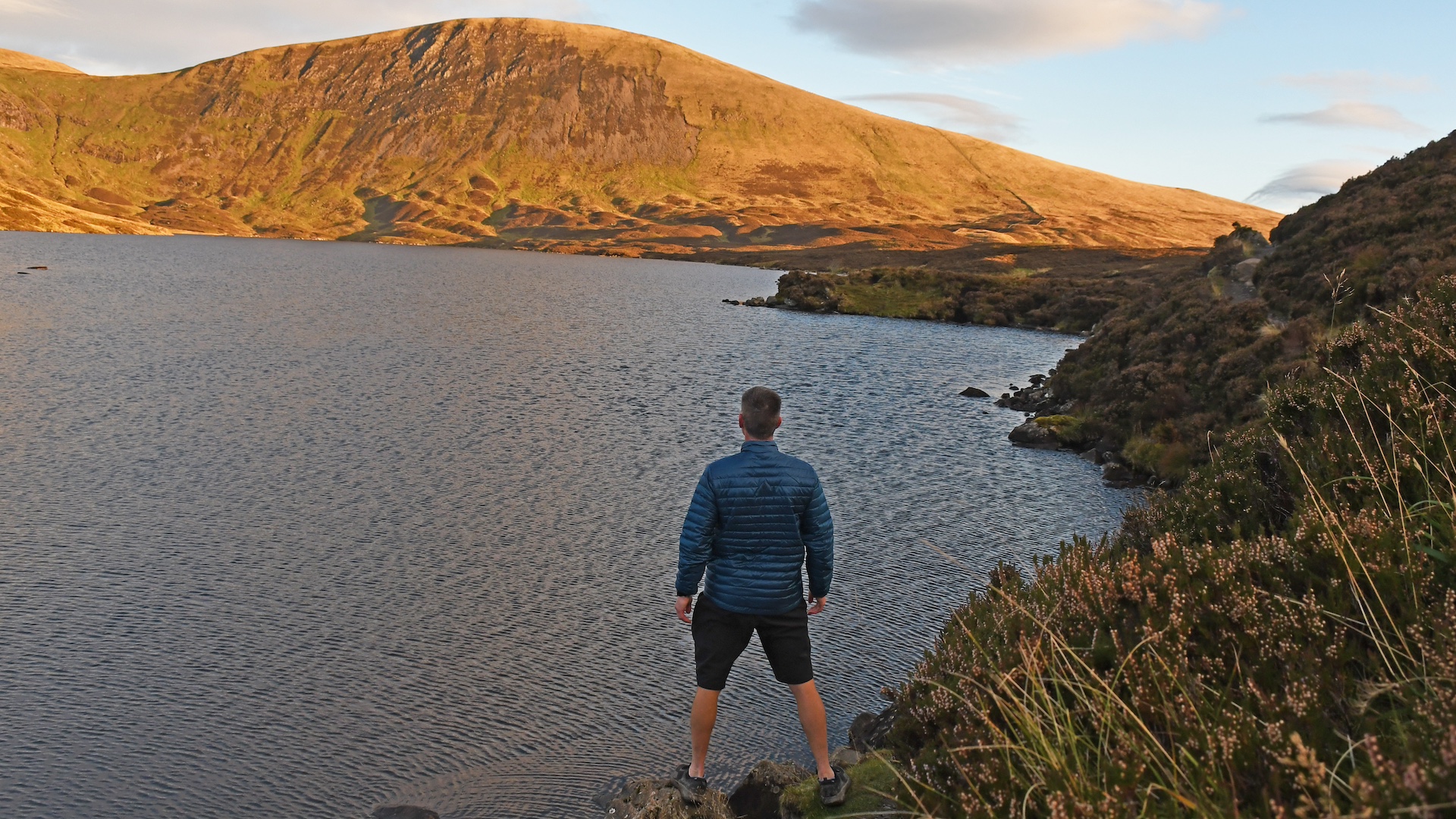
I’ve been testing the Kathmandu Heli R Down jacket in the foothills, mountains and munros of Scotland, during September and October, as summer went south and fall started to make itself felt, with temperatures plummeting, especially on the peaks.
The first thing to note is that, while it works brilliantly as an outer layer during such escapades in fall and spring, the 600 fill-power Heli puffer is also perfectly proportioned to be used as a moderately toasty mid layer when conditions get even colder. By itself it’s not going to keep you warm during an Arctic dawn or on the top of any of the real mountains that people who visit the actual Kathmandu go there to climb, but it’s more than adequate for the vast majority of adventures most of us mere mortals attempt. And, as such, it fits over a base layer and under a waterproof shell layer exactly like good mid layer should do, without making you look like the Stay Puft Marshmallow Man.
Considering this, it’s a little bit annoying that the cuffs don’t feature thumb loops to keep the sleeves in place when you do put on an extra layer, which would also help sync sleeves with hiking gloves or skiing mitts, to avoid exposing bare skin to the elements.
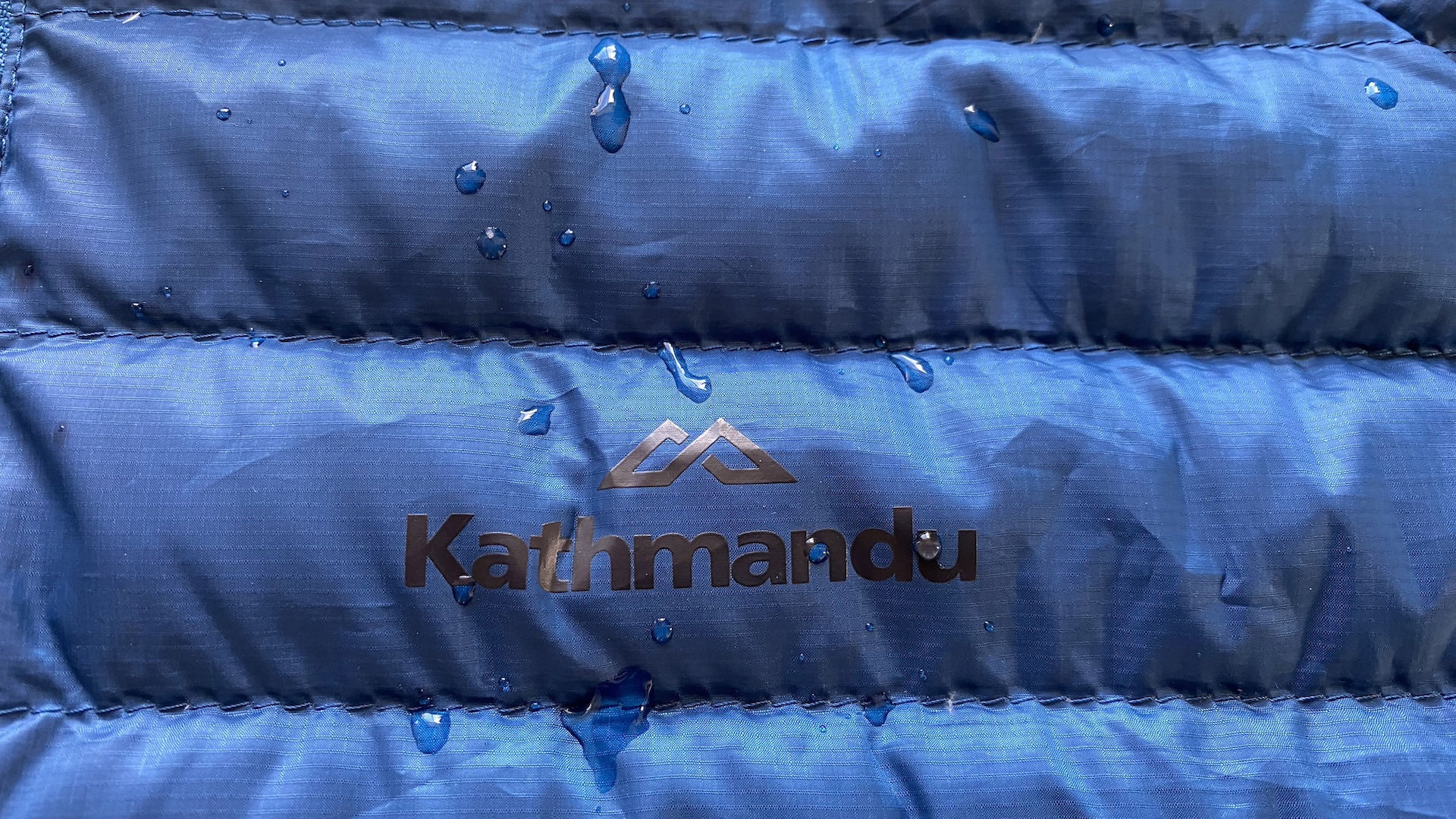
The overall design of the Heli R jacket is solidly decent, though. The recycled shell is windproof and water repellent, while the garment remains beautifully breathable. The fill is kept in place with well-stitched horizontal baffles, which extend around the back of the head to keep the rear of your neck warm, especially when the zip is fully pulled up.
This last point has proved important because, as mentioned, I’ve been testing the lidless version of this jacket. So long as the back of my neck is protected from chilly drafts, I’m generally quite happy for my mid layers to be sans hood. I rarely use the hoods on the puffer jackets and fleeces that do feature them, because a proper winter hiking hat is usually a warmer and more effective option for protecting my head and ears. As a result, I often think hoods just end up getting in the way. If you do like a lid, a slightly more expensive version of the Heli R with a hood is available.
The hem can be pulled in and tightened around hiking pants with toggles, to keep breezes from reaching your back. The DWR-treated shell effectively deals with light rain and the ripstop fabric feels tough enough to do its job adequately (obviously, avoid prickly flora and sharp rocks as much as possible). I have experienced a little bit of feather leakage, but overall the build quality of this jacket and the components used, including YKK zips, is good.

I’m particularly impressed with the pockets. The Heli has the standard hand pockets you would expect (which are generously sized and zip shut, and feature pull tags so you can open and shut them with gloves on), but there are also expansive pouches on the inside of the jacket, which can be used to stash sheet maps and route guides (if you use such archaic things) or even a hot water bottle if you’re feeling the cold around the camp fire (top tip this, try it).
One of the hand pockets (the right one), swallows the entire jacket and then zips shut, making it very easy to pop into a backpack and take on a hike if you think temperatures are likely to drop when you near the top of the hill or peak you’re climbing.
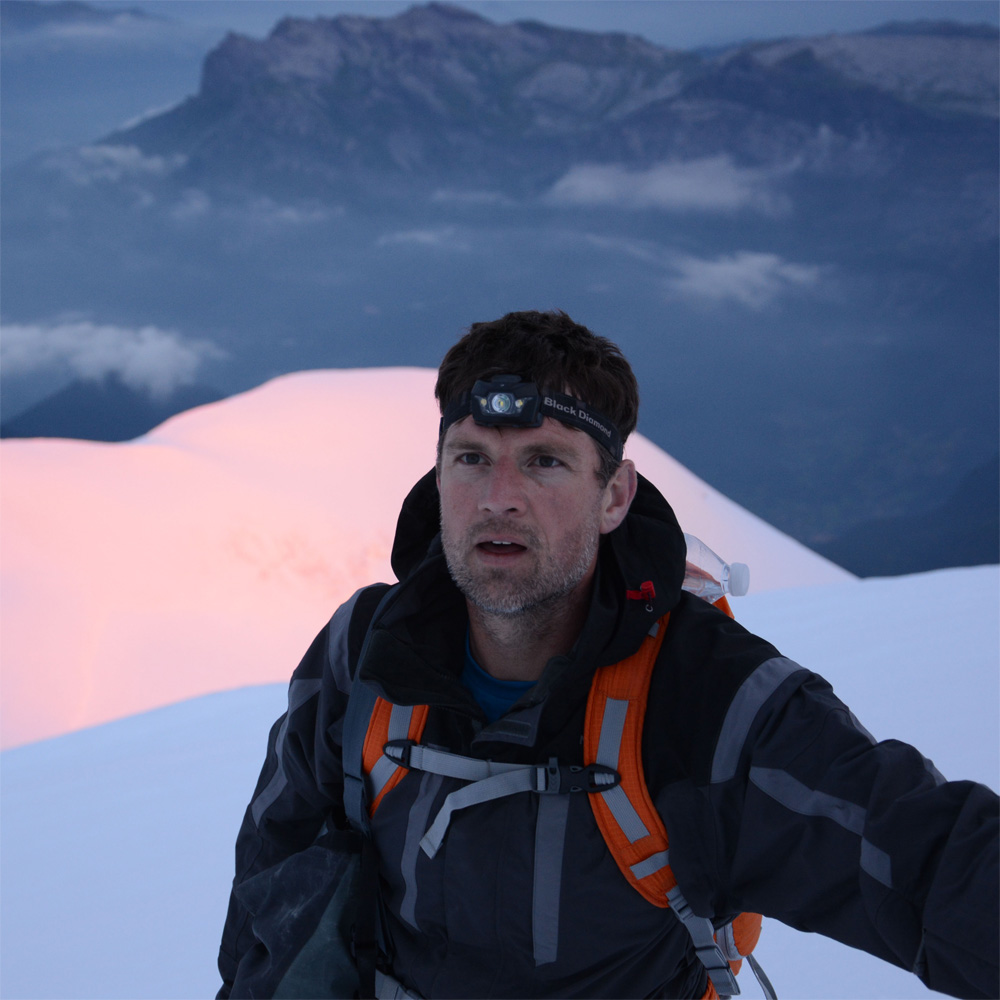
Author of Caving, Canyoning, Coasteering…, a recently released book about all kinds of outdoor adventures around Britain, Pat has spent 20 years pursuing stories involving boots, bikes, boats, beers and bruises. En route he’s canoed Canada’s Yukon River, climbed Mont Blanc and Kilimanjaro, skied and mountain biked through the Norwegian Alps, run an ultra across the roof of Mauritius, and set short-lived records for trail-running Australia’s highest peaks and New Zealand’s Great Walks. He’s authored walking guides to Devon and Dorset, and once wrote a whole book about Toilets for Lonely Planet. Follow Pat’s escapades on Strava here and Instagram here.
